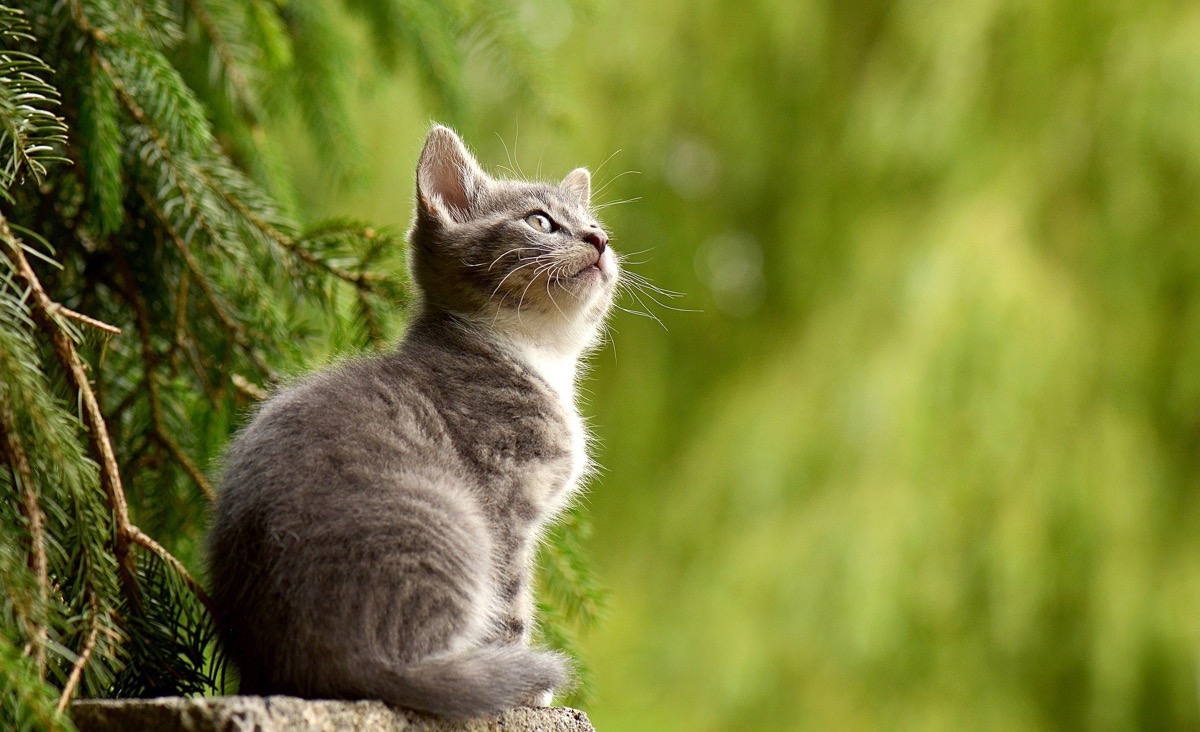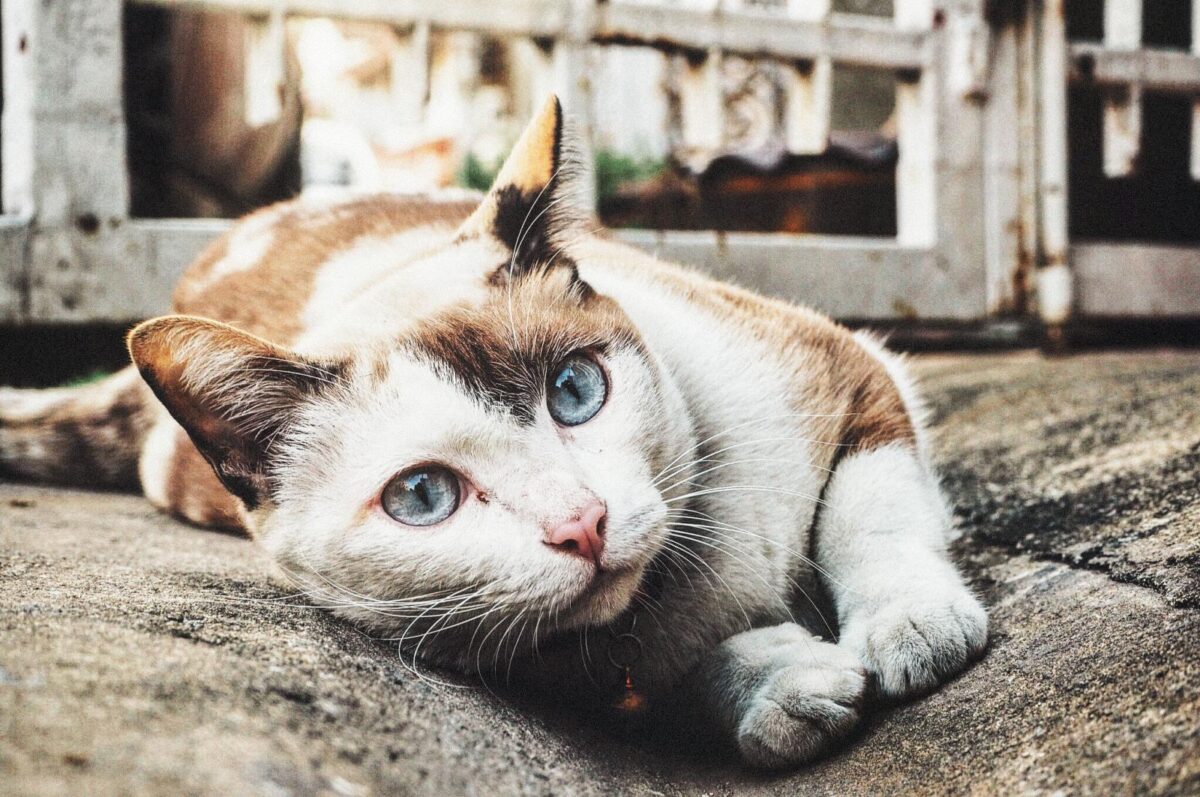
Walking through the streets of any city, or even any town, there are some small, scary beings that hide under cars, or around garbage containers. Most likely, there are humans who detest them, to the point of wanting to end their lives as soon as the opportunity arises.
They, the feral cats, are the great forgotten. They were born and raised apart from human society, but in the same world as us. With any luck, there will be someone to feed them, but that won't change their precarious situation much. In reality, they must continue to protect themselves from those who wish to harm them.
life of feral cats
The rain and the cold are two of its enemies. Other two. They can spell the end for the sick, as well as for puppies who are not yet regulating their body temperature well. Their mothers will do the impossible to keep them safe from low temperatures, but for a cat living among humans in a city is a daily challenge.
Like us, they are warm-blooded animals. But their body temperature is somewhat higher than that of humans: around 38 degrees Celsius. The problem is that they will not control it until two or three months after its birth, and even so, in case of frost it is most likely that they will not get ahead before the first year.
Social groups
They are said to be very independent, But their survival strategy on the fringes of the human world is to live in groups. The females take care of the little ones without straying too far from them, while the males go out to patrol the area they consider to be their territory. Yes indeed, all become active especially at night, which is when there is less noise in the streets and when it is more comfortable for them to go looking for food in garbage cans or… wherever they find it.
When there is a new cat in the group they follow a strict protocol: first, from a certain distance they are observed and smelled; then, if things go well, the new cat will be able to rest close to them, but still keeping their distance. Over time, and as they gain confidence, they will accept him in the family, letting him play with the young, or sleep with them.
Of course that's only if all goes well. On some occasions, especially when the new cat is an adult and/or it is the mating season, it is rejected with growls and snorts. They will try to avoid fights, but if any of the parties involved feel threatened, they will not hesitate to attack. But what are those fights like?
What are feral cat fights like?
I have seen several throughout my life, and I can confirm that they are generally short. It gives the impression that they are aware of their body, and that they can do a lot of damage. Proof of this are the body signals they emit: staring, loud and serious meow, bristly hair. Everything is part of a plan to try to avoid conflict. In fact, if they reach the legs, that is, if they get to use their claws, they give each other one, maybe two slaps, then the 'weaker' one runs away from the 'stronger' one, and the latter chases him... or not; in the event that he does follow him, they will return to the same thing again, unless the 'weaker' manages to flee from the 'stronger', or the 'stronger' has managed to throw him out of his territory .
While the end of this situation is decided, we humans will be trying to sleep, or continue with our routines. Most likely, many dislike and even annoy the noise that cats make. And it is logical: nobody likes to be interrupted in their sleep or the task they are doing at that moment.
What consequences?
There are those who decide to complain, and after your complaints there will come a van driven by people who will catch these animals and take them to centers full of cages. Cages that they will share with a dozen cats, if not more.
Fear and insecurity take over some creatures who do not understand why they have been deprived of their freedomAnd less when they were only doing what they have been doing for millennia: defend what they think is theirs, and if they are not castrated, try to find a partner. How bad is this?
The truth is that it doesn't seem to matter. Feral cats are, on many occasions, taken to kennels and so-called animal shelters where, in the best of cases, they will be adopted and taken to homes that, for them, will be nothing more than a new cage.
A feline that can travel several kilometers a day enclosed within four walls is a feline with serious problems, not physical, but emotional. He spends his days hiding under the bed or in a corner, hissing at people who want to take care of him, and he can even attack them. His soul, heart, or whatever you want to call it, is broken.
Feral cats are not animals that can live in a house, because they love freedom.

So, what to do? Leaving them on the streets does not seem humane either. Illnesses, cars, unscrupulous people… What to do?
Hi Aurelio.
A feral cat is a cat that needs to be outside, for example a fenced yard might be a good place for it.
The problem is the same as always: the town halls, without saying or doing anything, let the volunteers take care of everything... and of course, that means what we already know, that the feed, the vet, etc., all those expenses, the assume these people single-handedly.
If things were different, shelters would be set up in the open air, with their little houses and others to protect themselves from the cold and the heat.
But in Spain there is still a long way to go.
Thanks for stopping by.
My building has a private garden and a colony of cats appeared in it, the vast majority of the neighbors were happy because among other things they took care of the rats. The neighbors who have cats brought them food and someone put a water drinker for them. In addition, the gardeners also left the garbage can that they use lying down so that they had shelter and also the lower part of the building are some arcades where they went if it rained. After several years, some neighbors began to complain about the cats and "mysteriously" they began to disappear. The worst thing is that the kennel here has a reputation that if you don't claim them in a week they will be euthanized. And nothing now the same ones who complained about the cats complain that there are rats again... Luckily I have seen some of them in other gardens of neighboring buildings and after so many years several groups were formed in different gardens but ours no longer they step on it a pity the truth
If it's a shame. The worst thing is that, although there are more and more animal shelters and protectors, there are still many more kennels in which animals of all ages, breeds, sizes and health conditions are euthanized.
Let's hope the situation changes soon.